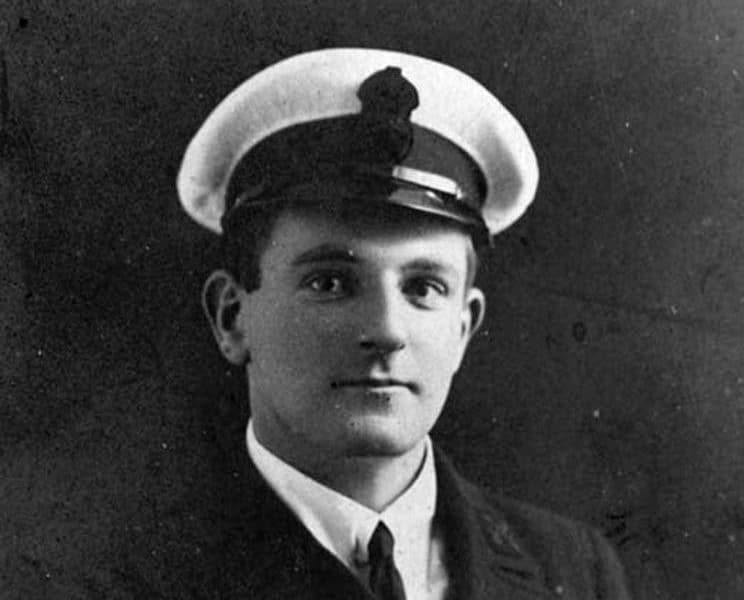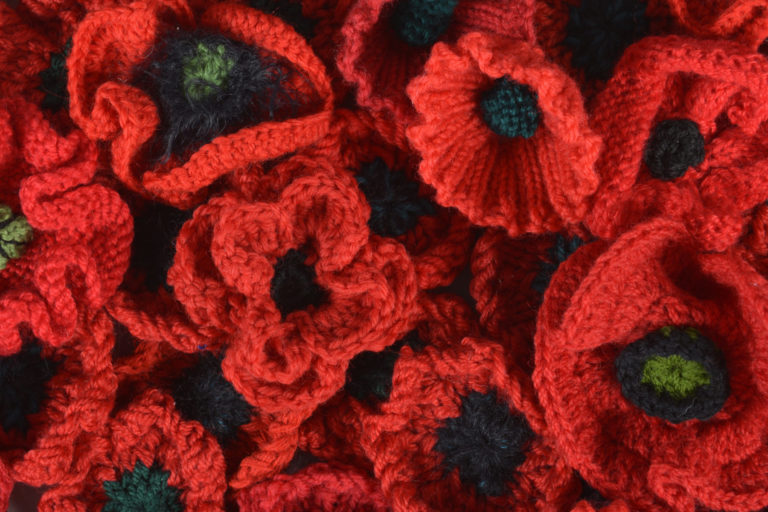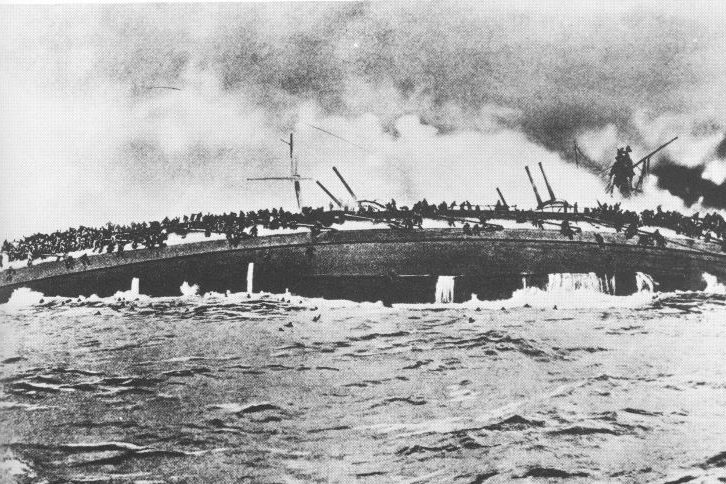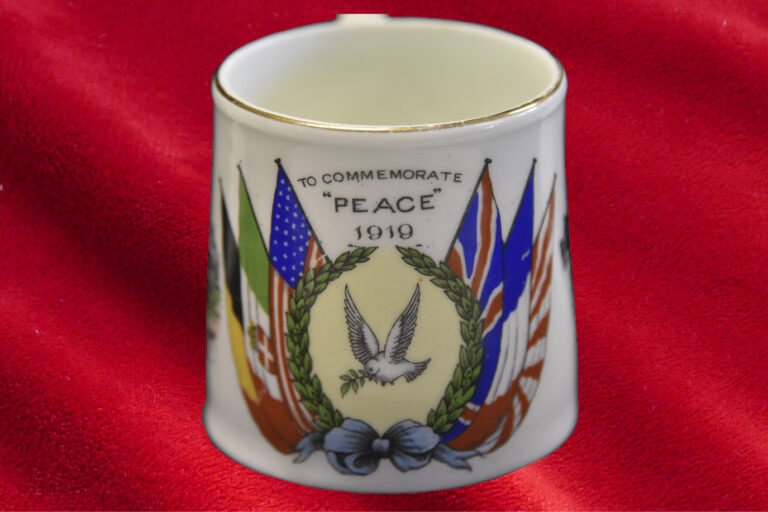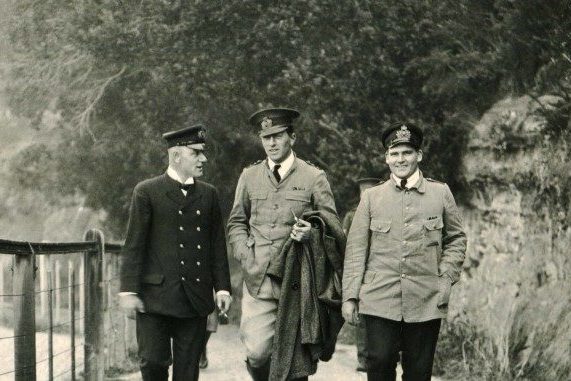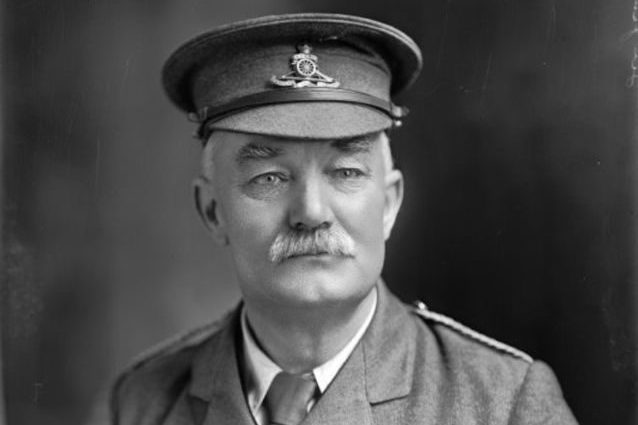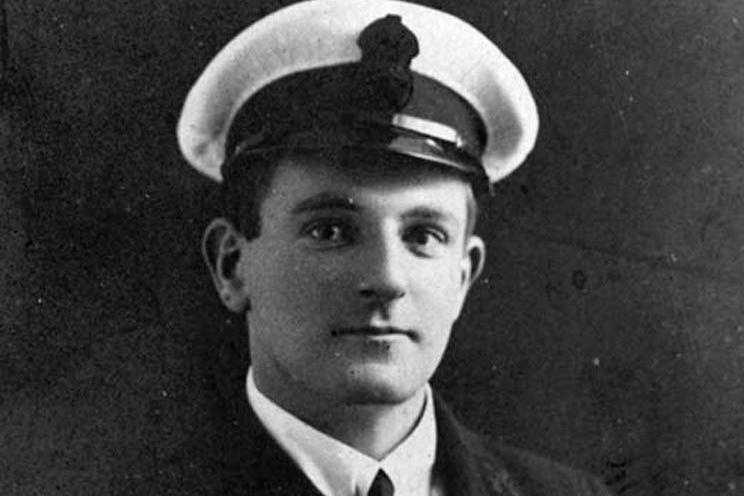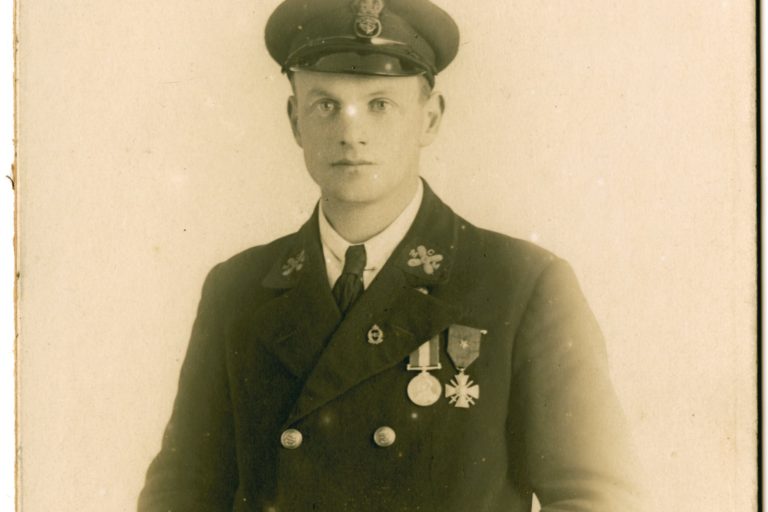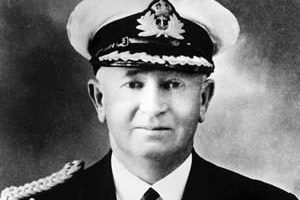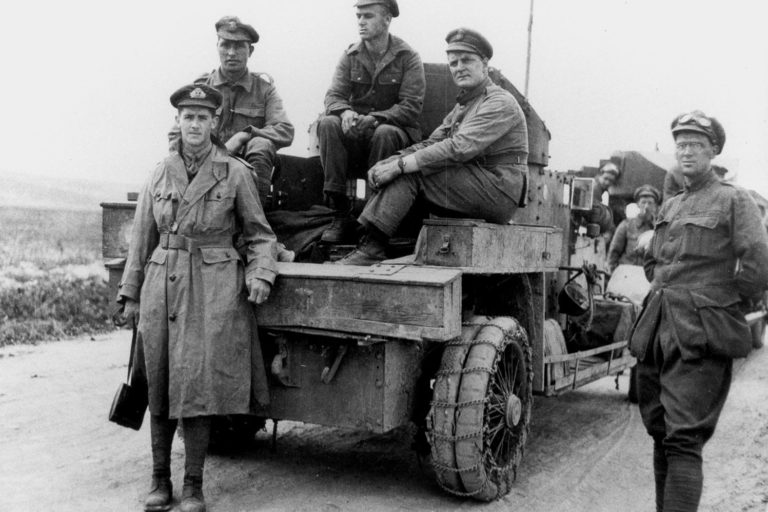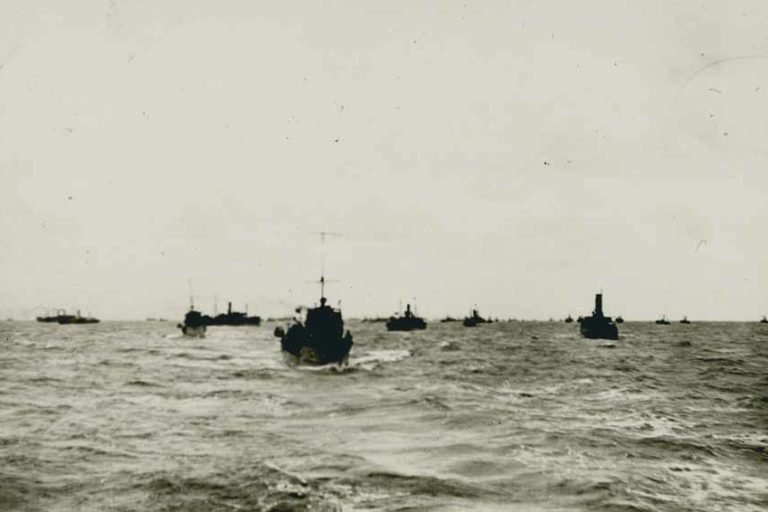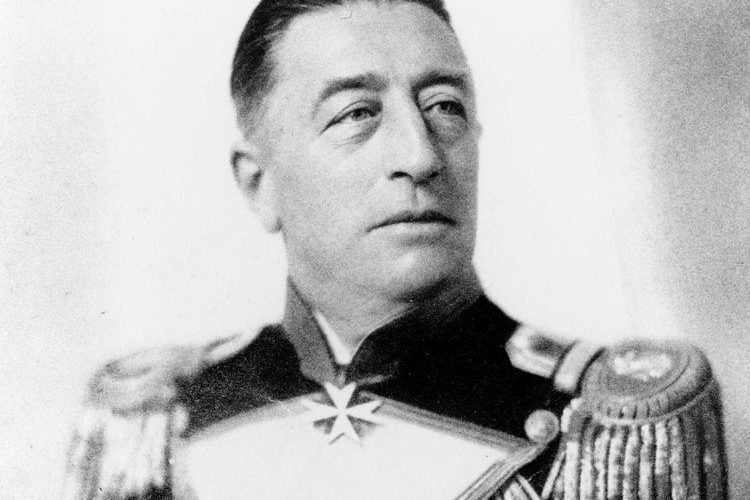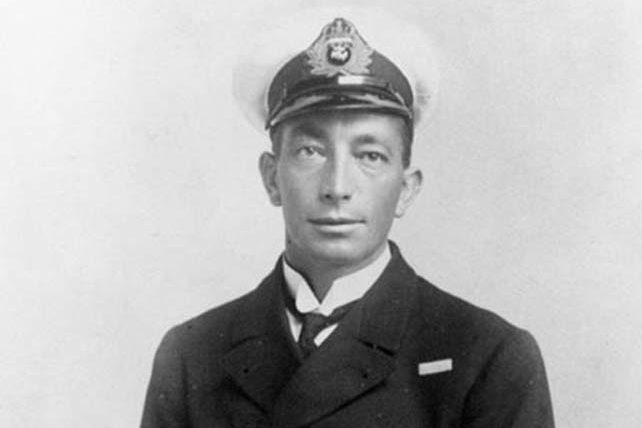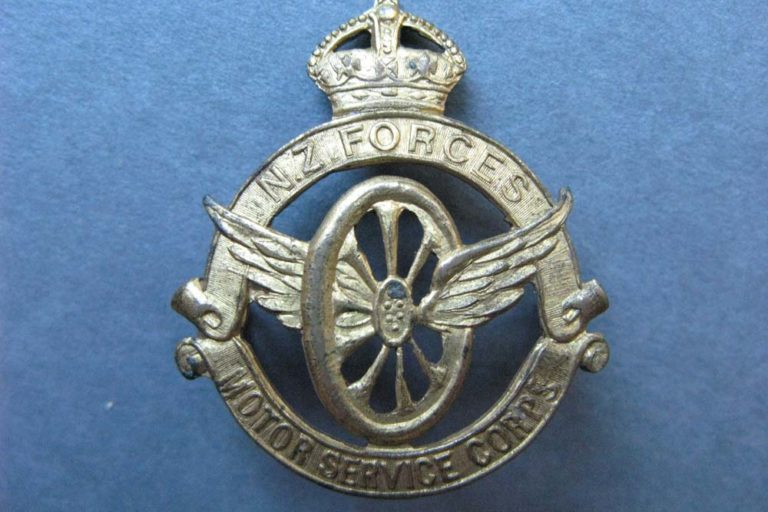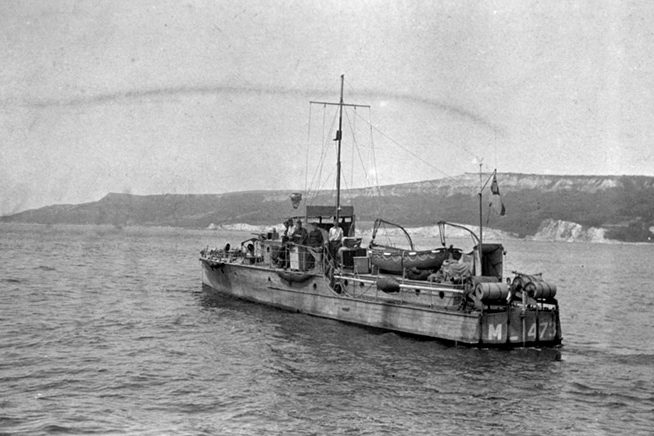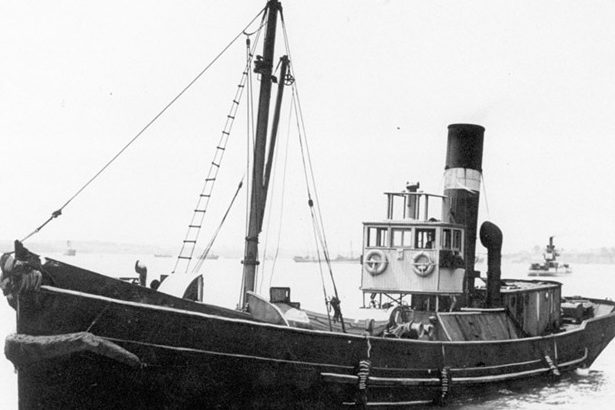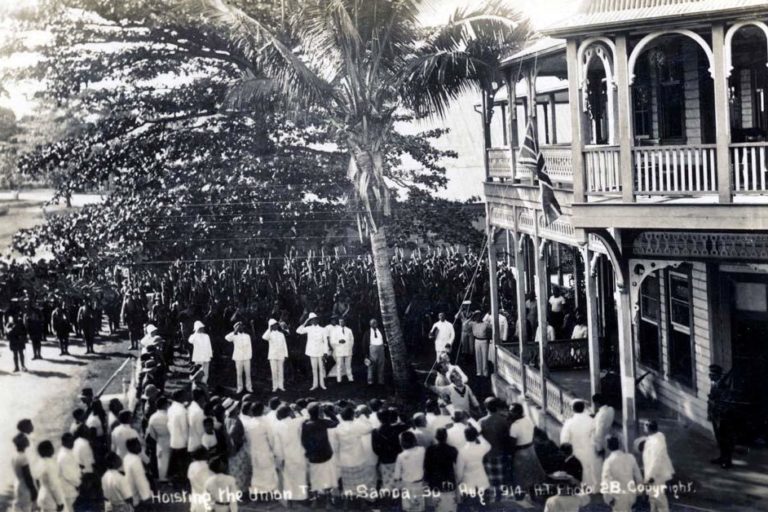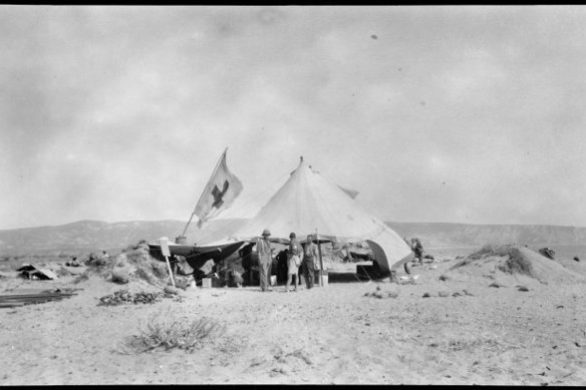Read about some notable New Zealanders who served in the RNVR, RNR, RNZNVR. Including Sub-Lieutenant Hywell Wynn Hughes, CPO E.W. Blakiston, Temporary Lieutenant Joseph Gaunt, Commander William J. L. Smith, Temporary Sub-Lieutenant Philip Wallace Smith, Captain Charles Palmer, CPOMM Roy Alexander, Able Seaman Leonard Bruce Hill and Temporary-Sub Lieutenant Baxter.
Hughes, Sub-Lieutenant Hywell Wynn RNZNVR
Sub-Lieutenant Hughes after officer training was posted to the Motor Torpedo Boat service. He was killed in action while participating in Operation AGREEMENT, a raid carried out by the RN on Tobruk 13-14 September 1942. Unfortunately the raid failed to achieve its objectives. However, Hughes and his fellow commanders of the MTBs pressed home their attacks despite the enemy fire.
Blakiston, CPO E.W.
CPO E.W. Blakiston (Eddie) is remembered by Hillard as ‘the best Ngapona has ever had both from the ratings and officers point of view.’[1] He had been in the RN during the First World War winning the Croix de Guerre as a leading seaman. He joined Ngapona as a Chief Gunners Mate to instruct in gunnery. Prior to arriving in New Zealand he had been chosen by the RN as a senior rating to help establish the Royal Canadian Navy. He first served at Philomel before moving to Ngapona. At the onset of the Second World War he returned to Philomel as an instructor. He was responsible for all new entry officer training and then basic training for all Wrens. He was promoted to WO then commissioned as a Lieutenant in 1944. He ended the war as the Port Gunnery Officer for Auckland. He was posted as the first staff officer when HMNZS Ngapona was commissioned in 1948 and served until his retirement in 1952.[2]
Gaunt, Temporary Lieutenant Joseph
Joseph Gaunt was born on 20 March 1920 in Bradford Yorkshire and grew up in New Zealand were in 1939 he volunteered for the RNZAF. Gaunt entered the RNZAF as some of the first “hostilities only” aircrew on 3 October 1939.[3] There were a couple of very close shaves with exploding bombs that destroyed five Wellington bombers and a runaway machinegun in a turret that nearly shot him.[4] Sadly, he became ill and was invalided out of the RAF as unfit for military service.[5] Upon his recovery, he transferred to the Royal Navy joining as an ordinary seaman on 29 January 1941[6] and completed his initial training at HMS Collingwood. He was posted to the destroyer HMS Arrow in April 1941 for sea training and was then posted to the Hunt-class destroyer HMS Southdown for active service from August 1941.[7] Ten months after joining the RN he was promoted to the rate of Able Seaman and continued to serve on Southdown until April 1942. During this time his ship was assigned to hunt the German battleship Scharnhorst when she broke out of Brest into the North Sea.[8] He returned ashore in April 1942 and was sent to HMS King Alfred for officer training. In July 1942, having successfully passed the course, he was commissioned as a Temporary Sub-Lieutenant in the Royal Naval Volunteer Reserve.[9] After the commission, Joseph Gaunt like many other newly commissioned officers was assigned to the fleet that would carry out Operation OVERLORD, the invasion of Europe. LCT HQ at Troon Ayrshire issued a Naval Watchkeeping Certificate on 24/2/1943 to Gaunt noting that he was competent to take charge of a Watch as sea as a lieutenant and to perform efficiently the duties of that rank. It noted that ’his certificate is granted for Landing Craft, Tank, and similar craft only’.[10] At a shore base in Warsash, Hampshire he was given command of LCI(S) 517 or Infantry Landing Craft (Small). This was one of thirty-six craft designed and built to carry infantry and land them on the beaches of Normandy. These craft had a crew of sixteen and could carry up to 85 fully equipped infantrymen. They were assigned to a base in the Hamble River. Training was conducted for the D-Day landings by beaching their LCI(S) on the gravel beaches near Portsmouth.
Smith, Commander William J. L. DSO
Commander W.J.L. ‘Kiwi’ Smith enlisted in the New Zealand Army in 1940 and became a gunnery officer in the 19th Field Regiment. Given the option of staying in the Army in New Zealand at a lower rank or joining the RNZAF, Smith elected to sign up for the naval service courtesy of Scheme B in May 1943.After a short stint at HMNZS Tamaki he travelled to England onboard the SS Ruahine to continue his training at HMS Ganges after which he joined the ship’s company of the King George V-class battleship HMS Duke Of York. Officer training at HMS King Alfred followed Smith’s mandatory sea time. He then joined Special Services and was posted to HMS Dolphin where he under went rigorous testing to assess his suitability as a submariner. After D-Day Smith was drafted to HMS Varbel to train on midget submarines, eventually becoming Commanding Officer of one of the training craft, before being made First Lieutenant of the operational submarine XE6, for which the HMS Bonaventure served as depot ship. XE6 and Bonaventure were sent south to the eastern coast of Australia. With the tragic loss of two senior officers in separate diving accidents the submarine flotilla had a complete reshuffle of crew which resulted in Smith becoming first lieutenant on XE3. On 31 July 1945 XE3 carried out a successful attack as part of Operation STRUGGLE on the Japanese cruiser Takao berthed at the naval base in Singapore, an action for which he received the DSO. Upon the cessation of the Second World War, Smith was one of twelve selected to train as senior officers for the Royal New Zealand Navy. He served on a variety of ships before being sent on a sub lieutenants’ course in the United Kingdom.
SMITH Temporary Sub-Lieutenant Philip Wallace RNZNVR
Philip Smith was born on 5 December 1915 and lived in Mt Albert, Auckland. He was a member of the Royal New Zealand Navy Volunteer Reserve (RNZNVR). Like many other reservists, Smith was accepted for training under Scheme B. In May 1940 a formal process for recruiting men in New Zealand for naval service came from the Admiralty.Philip Smith arrived at HMS Ganges at the end of October 1940 as an Ordinary Seaman. He remained in Britain for training and passed out in October 1941 at the end of October 1940 as an Ordinary Seaman. He remained in Britain for training and passed out in October 1941, being promoted to the rank of Temporary Sub-Lieutenant on 2 October 1941.[11] As an officer he then was posted to the shore establishment HMS King Alfred located in Howe, Essex. He was given further training here for the month of October 1941. He was then sent to HMS Dolphin a base for Royal Navy submarines and a training school for those entering service aboard submarines. He spent another month there training.[12] His first operational posting was to HMS Sultan, a naval base located in Singapore. His posting is dated from 25 November 1941, twelve days before the Japanese navy attacked Pearl Harbour. When there he was posted to the depot ship Anking.[13] His task in Singapore was to act as a liaison officer with the Dutch submarines that were based in the Dutch colony of what is now Indonesia. It appears that he was assigned to this task up until February 1942. On 11 February 1942 HMS Sultan was abandoned by the Royal Navy as Singapore was evacuated ahead of the surrender to the advancing Japanese forces. A fleet of ships and boats made their way to Batavia (now Jakarta). Smith accompanied this fleet aboard the Anking and must have remained in Batavia until 27 February 1942. At that point, orders were given to all British auxiliary vessels to leave Batavia. The fleet of vessels then reached the harbour of Tjilatjap on 2 March 1942. Because of the threat posed by the Japanese forces the fleet was warned not to enter the harbour. Therefore the sloop HMAS Yarra was ordered to escort Anking along with the tanker Francol and the minesweeper MMS 51 to the Australian port of Fremantle. The convoy made progress southwards until the morning of 4 March 1942. On that morning, at about 0630, a squadron of three Japanese cruisers and two destroyers caught the convoy at sea. Anking was the first to be sunk after 10 minutes of shelling by the cruisers followed by HMAS Yarra, Francol, and MMS 51. The Japanese then headed northwards leaving survivors behind spread across a vast expanse of sea. Smith was amongst those survivors but gave his place to someone else and lost his life that day. In the early evening, a passing Dutch vessel picked up the survivors from Anking. The final entry on his posting record card states ‘Death Presumed’.[14] For his sacrifice and courage, Smith was awarded a posthumous Mention in Despatches.
Palmer, Captain Charles
Charles Palmer is the father of the Naval Reserves in New Zealand. He served in the First World War in the harbour patrol service from August 1914 until he volunteered to serve with the RNR in England. After training, he served as an officer on minesweepers and motor launches as did some 200 New Zealanders. He finished his service by taking a flotilla of MLs up the Rhine to Cologne to supervise the Armistice. Upon his return to New Zealand he began to work for a Reserve to be formed. By 1924 he had achieved this goal with the first parade being held in 1925. He was lobbied the government and got the money to purchase the land at St Mary’s Bay that would serve as the home of the Auckland Naval Reserves until 2007.
Palmer, Commander Charles ‘Bunty’ Palmer DSO & Bar, MiD
He joined the RNVR NZ as a rating and quickly was promoted to officer status. He served during the Second World War. Like his father he started on harbour patrols in Auckland but went overseas in 1940 with other famous New Zealanders as Peter Phipps. There, he was given command of a minesweeper and served in the coastal forces in the English Channel. He won a DSC for his service. In 1941 he was promoted and given the command of an ocean-going minesweeper. He participated in the capture of Madagascar and then joined the North African campaign, sweeping ports and harbours as the Allied forces advanced into Tunisia. He won a bar to his DSC at this time. He then went on to participate in the landings on Sicily, and the landings on Italy. While minesweeping in September 1943 his ship struck and mine and he was badly wounded. It would not be until 1945 that he recovered.
It is worth noting here that the HMNZS Ngapona building on Philomel has been named after the Palmers.
Alexander, CPOMM Roy DSM
Roy Alexander was one of 200 New Zealanders to volunteer with the RNR motor boat service in the First World War. He was aboard a motor launch that participated in the raid on Zeebrugge and Ostend 23 April 1918. He was wounded and died of his wounds in August 1918. He received the DSM for his actions during the raid.
Hill, Able Seaman Leonard Bruce DSM
Hill joined the Auckland Division of the RNVR (NZ) in 1940. By April 1941 he was serving in HMS SULTAN, the Royal Naval Base in Malaya. In February 1942 he was on board ML 310, commanded by another New Zealander, Lieutenant H.J. Bull RNZNVR. This vessel embarked Rear Admiral E.J. Spooner and Air Vice Marshal Pulford with another five officers and 26 ratings for evacuation from Singapore on 13 February. Two days later when nearing the Banka Strait the launch was attacked by aircraft and a Japanese destroyer. In sinking condition it was decided to beach it on Tjibea Island, where the passengers were disembarked. Later the Japanese boarded the vessel and ordered the crew ashore. Lieutenant Bull and his crew made a native prahu seaworthy, then Bull with two ratings and two islanders set out to seek help. One of the ratings was Able Seaman Hill. After a passage of seven days they reached Merak in Java, where arrangements were made to help those left at Tjiba. The last six hours of the passage was made by rowing continuously. Lieutenant Bull was awarded the DSC and Able Seaman Hill the DSM. Able Seaman Hill’s award was based on the report of Lieutenant Bull who made special mention of his untiring efforts and devotion to duty both during the action and later on the Island were exemplary.
Baxter, Temporary-Sub Lieutenant FAA RNZNVR
Ewan Baxter, like over a 1,000 New Zealanders, chose to serve with the Fleet Air Arm during the Second World War. BY late 1944 he was flying of a RN carrier in the Pacific as part of the British Pacific Fleet. At this time, New Zealanders made up 25% of all the aircrews serving on the seven British carriers. He was carrying out raids on Indonesia in January 19445 when he was shot down and captured. At some time prior to the Japanese surrender he was murdered along with another New Zealander and seven other FAA aircrew. Their bodes were never recovered.
[1] ibid., p. 136.
[2] ibid., pp. 136-138.
[3] DLE 0080 J Gaunt Personal Reminiscence, p. 1.
[4] ibid., pp. 2-3.
[5] ibid., p. 2. See also a newspaper clipping held in his personal collection c.1942
[6] EZG0008 J Gaunt Personal Collection – DAG 0005 Certificate of Service
[7] ibid.
[8] DLE 0080 J Gaunt Personal Reminiscence, p. 9.
[9] EZG0008 J. Gaunt Personal Collection – DGR 0019 Commissioning notice and DAG 0005 Service Certificate
[10] EZG0008 J. Gaunt Personal Collection – DDK 0005 Naval Watchkeeping Certificate
[11] Posting Record Card for Smith, Ty. Sub-Lieutenant Philip W. RNZN Museum.
[12] Posting Record Card for Smith, Ty. Sub-Lieutenant Philip W. RNZN Museum. See also Lt Cdr. B. Warlow, Shore Establishments of the Royal Navy: Being a list of the Static Ships and Establishments of the Royal Navy 2nd ed., Liskeard: Maritime Books, 2000, pp. 47, 81.
[13] ibid.
[14] ibid.


